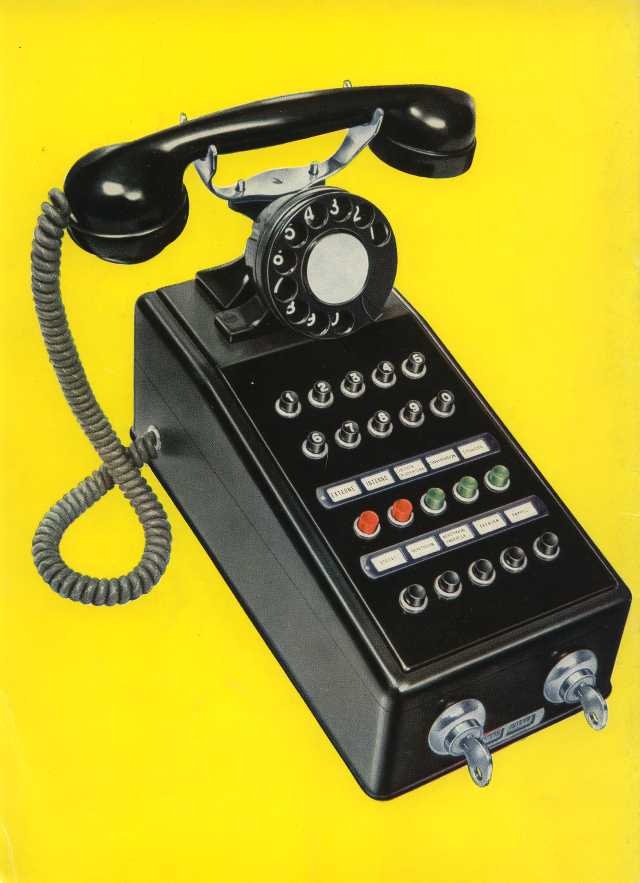oerlikon: Ipsophone details
oerlikon: Ipsophone details

Semi J. Begun wrote in his book "Magnetic Recording" (5th edition, 1954):
The Ipsophone, developed by the research division of the Oerlikon Machine-Tool Works of Bührle and Company near Zurich, Switzerland, is a magnetic-recording device that automatically records and reproduces telephone messages. Although magnetic recording is almost ideally adapted to such service, and although telephone recorders have been manufactured in Europe for many years, the Ipsophone is the first device in which the many technical problems involved seem to have been solved to satisfaction.
The Ipsophone consists of two parts, a telephone handset mounted on a control box and a much larger housing containing the magnetic-recording apparatus, relays, amplifiers, and so on. Three complete magnetic-recording channels are included in the apparatus, one of which is used to answer the telephone when the subscriber is not present, and which provides a series of signals needed for remote control of the equipment. After the telephone rings a few times, a recorded message informs the caller that an Ipsophone is ready to record. The other two channels are provided for recording incoming messages. The recording mechanism can be seen in Fig. 6—27.
 Fig. 6-27
Fig. 6-27
Of the two recording channels, one records for 5 min. and the other for 25 min. The purpose of this dual-channel recording arrangement is to reduce to a very short time the waiting period necessary during rewind. The rewind-record ratio for both units is 5 to 1, and with both reels empty, the 5 min. reel is recorded first, after which all subsequent recordings are made on the second reel. As soon as the first reel is fully recorded, it rewinds automatically, ready to repeat immediately. When the repeat signal is given to the machine, the second reel rewinds while the first is playing. The maximum possible waiting time necessary for rewinding is thus only 1 min. The magnetic-recording apparatus, which employs steel wire for the recording medium, is straightforward. Of particular interest is the ingenious system of voice-operated relays that makes it possible for an Ipsophone subscriber to have his telephone messages repeated to him by telephone, without at the same time giving access to unauthorized persons. After the Ipsophone has announced that it is ready to accept a message, the calling party can by using a code word make the instrument start counting. The Ipsophone slowly repeats "one, two, three, .... .... .... ten." The subscriber pronounces the words, "Hello, Hello," after three of these numbers, upon which the Ipsophone will repeat all recorded messages into the telephone. The subscriber can set the apparatus to respond to any three numbers he wishes, and the possible number of combinations is high enough so that secrecy is well assured.
Unfortunately there is no picture of the telephone handset control box available, so any extending informations would be highly appreciated.
GR
To thank the Author because you find the post helpful or well done.
Ipsophon Hauptapparat

Hello Mr Richter
The "Ipsophon Hauptapparat" looked like this:

Additional i would like to add, that the Ipsophone was developed from spring 1943 on by the Oerlikon, Bührle & Co. and then produced / sold in series by the Ipsophon-Vertriebs AG, Zürich, as published in the NZZ (Neue Zürcher Zeitung) of the 6. March 1946.
I added some pictures taken of advertising material of the Ipsophon-Vertriebs AG and of a Separatdruck aus der Neuen Zürcher Zeitung (also from Ipsophne-Vertriebs AG).
Kind regards, Walter Haring
To thank the Author because you find the post helpful or well done.